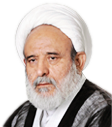
Islam attempts to synthesize reason and revelation, knowledge and values, in its approach to the study of nature. Knowledge acquired through rational human efforts and through the Qur'an are seen as complementary: both are 'signs of God' that enable humanity to study and understand nature. Between the second and eighth centuries AH (eighth and fifteenth centuries CE), when Muslim civilization was at its zenith, metaphysics, epistemology and empirical studies of nature fused to produce an explosion of 'scientific spirit'.
Scientists and scholars such as Ibn al-Haytham, al-Razi, Ibn Tufayl, Ibn Sina and al-Biruni superimposed Plato's and Aristotle's ideas of reason and objectivity on their own Muslim faith, thus producing a unique synthesis of religion and philosophy. They also placed great emphasis on scientific methodology, giving importance to systematic observation, experimentation and theory building.
Initially, scientific inquiry was directed by everyday practices of Islam. For example, developments in astronomy were influenced by the fact that the times of Muslim prayer were defined astronomically and its direction was defined geographically. In the later stage, the quest for truth for its own sake became the norm, leading to numerous new discoveries and innovations.
Muslim scientists did not recognize disciplinary boundaries between the 'two cultures' of science and humanities, and individual scholars tended as a general rule to be polymaths. Recently, Muslim scholars have started to develop a contemporary Islamic philosophy of science by combining such basic Islamic concepts as 'ilm (knowledge), khilafa (trusteeship of nature) and istisla (public interest) in an integrated science policy framework.
1. Science and metaphysics
2. Methodology
3. Revival attempts
1. Science and metaphysics
The Muslim inspiration for the study of nature comes straight from the Qur'an. The Qur'an specifically and repeatedly asks Muslims to investigate systematically natural phenomena, not simply as a vehicle for understanding nature but also as a means for getting close to God. In Surah 10, for example, we read:
He it is who has made the sun a [source of] radiant light and the moon a light [reflected], and has determined for it phases so that you might know how to compute years and to measure [time]...in the alternative of night and day, and in all that God has created in the heavens and on earth, there are messages indeed for people who are conscious of Him.
(Surah 10: 5-6)
The Qur'an also devotes about one-third of its verses to describing the virtues of reason. Scientific inquiry, based on reason, is thus seen in Islam as a form of worship. Reason and revelation are complementary and integrated methods for the pursuit of truth.
The philosophy of science in classical Islam is a product of the fusion of this metaphysics with Greek philosophy. Nowhere is this more apparent than in Ibn Sina's theory of human knowledge which, following al-Farabi, transfers the Qur'anic scheme of revelation to Greek philosophy. In the Qur'an, the Creator addresses one man - the Prophet - through the agency of the archangel Gabriel; in Ibn Sina's Neoplatonic scheme, the divine word is transmitted through reason and understanding to any, and every, person who cares to listen. The result is an amalgam of rationalism and ethics.
For Muslim scholars and scientists, values are objective and good and evil are descriptive characteristics of reality which are no less 'there' in things than are their other qualities, such as shape and size. In this framework, all knowledge, including the knowledge of God, can be acquired by reason alone. Humanity has power to know as well as to act and is thus responsible for its just and unjust actions. What this philosophy entailed both in terms of the study of nature and shaping human behaviour was illustrated by Ibn Tufayl in his intellectual novel, Hayy ibn Yaqzan. Hayy is a spontaneously generated human who is isolated on an island. Through his power of observations and the use of his intellect, Hayy discovers general and particular facts about the structure of the material and spiritual universe, deduces the existence of God and arrives at a theological and political .
While Mu'tazilite scholars had serious philosophic differences with their main opponents, the Ash'arite theologians, both schools agreed on the rational study of nature. In his al-Tamhid, Abu Bakr al-Baqillani defines science as 'the knowledge of the object, as it really is'. While reacting to the Mu'tazilite infringement on the domains of faith, the Ash'arites conceded the need for objective and systematic study of nature. Indeed, some of the greatest scientists in Islam, such as Ibn al-Haytham (d. 1039), who discovered the basic laws of optics, and al-Biruni (d. 1048), who measured the circumference of the earth and discussed the rotation of the earth on its axis, were supporters of Ash'arite theology.
The overall concern of Muslim scientists was the delineation of truth. As Ibn al-Haytham declared, 'truth is sought for its own sake', and al-Biruni confirmed in the introduction to his al-Qanun al-mas'udi: 'I do not shun the truth from whatever source it comes.' However, there were disputes about the best way to rational truth. For Ibn Sina, general and universal questions came first and led to experimental work. He begins his al-Qanun fi'l-tibb (Canons of Medicine), which was a standard text in the West up to the eighteenth century, with a general discussion on the theory of drugs.
For al-Biruni, however, universals came out of practical, experimental work; theories are formulated after discoveries. But either way, criticism was the key to progress towards truth. As Ibn al-Haytham wrote, 'it is natural to everyone to regard scientists favourably.... God, however, has not preserved the scientist from error and has not safeguarded science from shortcomings and faults'.
This is why scientists so often disagree amongst themselves. Those concerned with science and truth, Ibn al-Haytham continued, 'should turn themselves into hostile critics' and should criticize 'from every point of view and in all aspects'. In particular, the flaws in the work of one's predecessors should be ruthlessly exposed. The ideas of Ibn al-Haytham, al-Biruni and Ibn Sina, along with numerous other Muslim scientists, laid the foundations of the 'scientific spirit' as we have come to know it.
2. Methodology
The 'scientific method', as it is understood today, was first developed by the Muslim scientists. Supporters of both Mu'tazilism and Ash'arism placed a great deal of emphasis on systematic observation and experimentation. The insistence on accurate observation is amply demonstrated in the zij, the literature of astronomical handbooks and tables. These were constantly updated, with scientists checking and correcting the work of previous scholars. In medicine, Abu Bakr Muhammad al-Razi's detailed and highly accurate clinical observations in the early third century ah (ninth century ad) provide us with a universal model. Al-Razi was the first to observe accurately the symptoms of smallpox and described many 'new' syndromes. However, it was not just accurate observation that was important; equally significant was the clarity and precision by which the observations are described, as was demonstrated by Ibn Sina in his writings.
The emphasis on model construction and theory building can be seen in the category of Islamic astronomical literature known as 'ilm al-haya, or 'science of the structure (of the universe)', which consists of general exposition of principles underlying astronomical theory. It was on the strength of both accurate observation and model construction that Islamic astronomy launched a rigorous attack on what was perceived to be a set of imperfections in Ptolemaic astronomy.
Ibn al-Haytham was the first to declare categorically that the arrangements proposed for planetary motions in the Almagest were 'false'. Ibn Shatir (d. 1375) and the astronomers at the famous observatory in Maragha, Adharbayjan, built in the thirteenth century by Nasir al-Din al-Tusi, developed the Tusi couple and a theorem for the transformation of eccentric models into epicyclic ones. It was this mathematical model that Copernicus used to develop his notion of heliocentricity, which played an important part in the European 'scientific revolution'.
Apart from the exact sciences, the most appropriate and interesting area in which theoretical work played an essential role was medicine. Muslim physicians attempted to improve the quality of materia medica and their therapeutic uses through continued theoretical development. Emphasis was also placed on developing a precise terminology and ensuring the purity of drugs, a concern that led to a number of early chemical and physical procedures.
Since Muslim writers were excellent organizers of knowledge, their purely pharmacological texts were themselves a source for the development of theories. Evolution of theories and discovery of new drugs linked the growth of Islamic medicine to chemistry, botany, zoology, geology and law, and led to extensive elaborations of Greek classifications.
Pharmacological knowledge thus became more diversified, and produced new types of pharmacological literature. As this literature considered its subject from a number of different disciplinary perspectives and a great variety of new directions, there developed new ways of looking at pharmacology; new areas were opened up for further exploration and more detailed investigation. Paper-making made publication more extensive and cheaper than use of parchment and papyrus, and this in turn made scientific knowledge much more accessible to students.
While Muslim scientists placed considerable faith in scientific method, they were also aware of its limitations. Even a strong believer in mathematical realism such as al-Biruni argued that the method of inquiry was a function of the nature of investigation: different methods, all equally valid, were required to answer different types of questions.
Al-Biruni himself had recourse to a number of methods. In his treatise on mineralogy, Kitab al-jamahir (Book of Precious Stones), he is the most exact of experimental scientists. However, in the introduction to his ground-breaking study India he declares that 'to execute our project, it has not been possible to follow the geometric method'; he therefore resorts to comparative sociology.
The work of a scholar of the calibre and prolificity of al-Biruni inevitably defies simple classification. He wrote on mineralogy, geography, medicine, astrology and a whole range of topics which dealt with the dating of Islamic festivals. Al-Biruni is a specific product of a philosophy of science that integrates metaphysics with physics, does not attribute to either a superior or inferior position, and insists that both are worthy of study and equally valid.
Moreover, the methods of studying the vast creation of God - from the movement of the stars and planets to the nature of diseases, the sting of an ant, the character of madness, the beauty of justice, the spiritual yearning of humanity, the ecstasy of a mystic - are all equally valid and shape understanding in their respective areas of inquiry. In both its philosophy and methodology, Islam has sought a complete synthesis of science and religion.
Polymaths such as al-Biruni, al-Jahiz, al-Kindi, Abu Bakr Muhammad al-Razi, Ibn Sina, al-Idrisi, Ibn Bajja, Omar Khayyam, Ibn Zuhr, Ibn Tufayl, Ibn Rushd, al-Suyuti and thousands of other scholars are not an exception but the general rule in Muslim civilization. The Islamic civilization of the classical period was remarkable for the number of polymaths it produced. This is seen as a testimony to the homogeneity of Islamic philosophy of science and its emphasis on synthesis, interdisciplinary investigations and multiplicity of methods.
3. Revival attempts
At the end of the twentieth century, scholars, scientists and philosophers throughout the Muslim world are trying to formulate a contemporary version of the Islamic philosophy of science. Two dominant movements have emerged. The first draws its inspiration from Sufi mysticism and argues that the notions of 'tradition' and the 'sacred' should constitute the core of Islamic approach to science.
The second argues that issues of science and values in Islam must be treated within a framework of concepts that shape the goals of a Muslim society. Ten fundamental Islamic concepts are identified as constituting the framework within which scientific inquiry should be carried out, four standing alone and three opposing pairs: tawhid (unity), khilafa (trusteeship), 'ibada (worship), 'ilm (knowledge), halal (praiseworthy) and haram (blameworthy), 'adl (justice) and zulm (tyranny), and istisla (public interest) and dhiya (waste).
It is argued that, when translated into values, this system of Islamic concepts embraces the nature of scientific inquiry in its totality; it integrates facts and values and institutionalizes a system of knowing that is based on accountability and social responsibility. It is too early to say whether either of these movements will bear any real fruit.
References and further reading:
1- Bakar, O. (1996) 'Science', in S.H. Nasr and O. Leaman, History of Islamic Philosophy, London: Routledge, ch. 53, 926-46. (Discussion of some of the main thinkers and principles of science in Islam.)
1- Dani, A.H. (1973) Al-Biruni's India, Islamabad: University of Islamabad Press. (Al-Biruni's research on the people and country of India.)
3- Fakhry, M. (1983) A History of Islamic Philosophy, London: Longman, 2nd edn. (A general introduction to the role of reason in Islamic thought.)
4- Hill, D. (1993) Islamic Science and Engineering, Edinburgh: Edinburgh University Press. (The classic work on the practical aspects of Islamic science.)
5- Hourani, G. (1975) Essays on Islamic Philosophy and Science, Albany, NY: State University of New York Press. (An important collection of articles on particular theoretical issues in the philosophy of science.)
6- Hourani, G. (1985) Reason and Tradition in Islamic Ethics, Cambridge: Cambridge University Press. (A discussion of the clash between reason and tradition in Islamic culture as a whole, especially in ethics.)
7- Ibn Tufayl (before 1185) Hayy ibn Yaqzan (The Living Son of the Vigilant), trans. S. Oakley, 8- The Improvement of Human Reason Exhibited in the Life of Hai Ebn Yokhdan, Zurich: Georg Olms Verlag, 1983. (This translation of Hayy ibn Yaqzan was first published in 1708.)
9- Kirmani, Z. (1992) 'An Outline of Islamic Framework for a Contemporary Science', Journal of Islamic Science 8 (2): 55-76. (An attempt at conceptualizing modern science from an Islamic point of view.)
10- Leaman, O. (1985) An Introduction to Medieval Islamic Philosophy, Cambridge: Cambridge University Press. (A general approach to the role of philosophy in Islam.)
11- Nasr, S.H. (1993) The Need for a Sacred Science, Richmond: Curzon Press. (An argument for the significance of religion in any understanding of science.)
12- Pines, S. (1964) 'Ibn al-Haytham's Critique of Ptolemy', in Actes du Xe Congrès internationale d'histoire des sciences, Paris: Ithaca. (One of the most important works in Islamic astronomy.)
13- Sabra, A.I. (1972) 'Ibn al-Haytham', in C.C. Gillispie (ed.) Dictionary of Scientific Biography, New York: Charles Scribner's Sons, 6th edn. (An excellent introduction to the thought and work of Ibn al-Haytham.)
14- Said, H.M. (ed.) (1979) Al-Biruni Commemorative Volume: Proceedings of the International Congress held in Pakistan, November 26-December 12, 1973, Karachi: Hamdard Academy. (Contains numerous papers discussing all the major works of al-Biruni.)
15- Saliba, G. (1991) 'The Astronomical Tradition of Maragha: A Historical Survey and Prospects for Future Research', Arabic Sciences and Philosophy 1 (1): 67-100. (A study of a particularly well-developed period of astronomical research in the Islamic world.)
16- Sardar, Z. (1989) Explorations in Islamic Science, London: Mansell. (Some contemporary debates on the nature of Islamic science.)
17- Young, M.J.L., Latham, J.D. and Serjeant, R.B. (1990) Religion, Learning and Sciences in the Abbasid Period, Cambridge: Cambridge University Press. (The leading work on the most important period for science in the Islamic world.)













